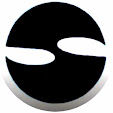Email not displaying correctly?
View it in your browser.
|
| Stop doing multi-band compression and start
using your multi-band compressor. Multi-band compressors are compressors that divide a sound into multiple frequency ranges and give you the ability to compress each frequency range (or band) independently. There are a small number of hardware options that do this, but it is much more common to do this with a plug in. These tools allow you to compress the low end differently form the high end, as well as differently from the mid range. The most common multi-band compressors or limiters will divide the sound into 3 or 4 bands, but some can do even more. Waves even has one that divides the sound into 16 separate bands! Multi-band compression can be a very powerful and enticing tool because it can easily make things feel big and present in a mix, but many engineers I know that have used multi-band compressors or limiters extensively have come to regret it. The reason is that over use of multi-band compression will not only reduce the actual dynamics of a sound, but it will reduce the spectral dynamics as well. I will cover this more at another time, but in short, spectral dynamics refers to how the frequency balances change in a sound. This is a very important part of mixing modern music, because even if we compress something a lot so it does not really get “louder” or “softer”, the fact that the sound is getting brighter or darker makes us feel that something is louder or softer. For example, when you hit a piano key hard, the tone gets brighter. So even if the sound does not actually get “louder” (technically I mean increase in amplitude) we still naturally feel that bright piano parts were played louder than the less bright parts. Multi-band compressors that “smack down” various frequencies can reduce the feel and character of a sound. This lessens a very important aspect in a mix, especialy with modern productions that are often so compressed.  I love multi-band
compressors, but I almost never use them to compress multiple bands. I
use them to compress single specific bands. This is where these tools
can become extremely powerful. When I am using a multiband compressor,
(for instance, C4 by Waves in the attached photo) I will “bypass” all
but one of the bands, and use that one band to address a specific
problem. For instance, if your overhead mics on a drum set sound good
but the snare is too loud, I would use only a mid-band (probably between
500-3000Hz) and set that band’s compressor to attenuate only when the
snare is hit. This would reduce the amount of snare in the overheads,
but unlike a traditional compressor, it would not greatly attenuate the
level of the cymbals. Another application would be an acoustic guitar
with a lot of string squeaks from fingers sliding on the stings. Many
times if you try to EQ out the squeaks, you can lose important high
frequency energy on the non-squeaky parts, and if you try to use
automation or traditional compression to address the problem it can
sometimes be very difficult to do it in a way that does not mess with
the musical performance. But if you use a narrow single band of a
multi-band compressor focused on the squeak sound, you can reduce the
squeaks with minimal effect on the overall performance. I love multi-band
compressors, but I almost never use them to compress multiple bands. I
use them to compress single specific bands. This is where these tools
can become extremely powerful. When I am using a multiband compressor,
(for instance, C4 by Waves in the attached photo) I will “bypass” all
but one of the bands, and use that one band to address a specific
problem. For instance, if your overhead mics on a drum set sound good
but the snare is too loud, I would use only a mid-band (probably between
500-3000Hz) and set that band’s compressor to attenuate only when the
snare is hit. This would reduce the amount of snare in the overheads,
but unlike a traditional compressor, it would not greatly attenuate the
level of the cymbals. Another application would be an acoustic guitar
with a lot of string squeaks from fingers sliding on the stings. Many
times if you try to EQ out the squeaks, you can lose important high
frequency energy on the non-squeaky parts, and if you try to use
automation or traditional compression to address the problem it can
sometimes be very difficult to do it in a way that does not mess with
the musical performance. But if you use a narrow single band of a
multi-band compressor focused on the squeak sound, you can reduce the
squeaks with minimal effect on the overall performance.The easy way to dial in the single band that you want to use is to use the band “solo” feature that most multi-band compressors with have. This will enable you to listen to just the frequencies that band is compressing. Adjust until you have isolated the problem frequencies and then compress to taste. Experiment with this and have fun fixing problems or even creating unique effects. The multi-band compressors are very powerful tools if you think beyond the way most people use them. -Ronan
“I think I learned more from
Ronan in one week than 9 months in recording school.” -J. B. Los Angeles
Upcoming EventsAlumni BBQ (for alumni of our 6 day Boot Camp) Sunday June 24, 2012 (free). Details » + DIY Acoustics Treatment for small studios. Tuesday June 26, 7:15-10:15 ($25) Details » + Intro to Home Recording – in Los Angeles Sunday July 8, 2012 ($45) Special price $35. Details » + |



No comments:
Post a Comment